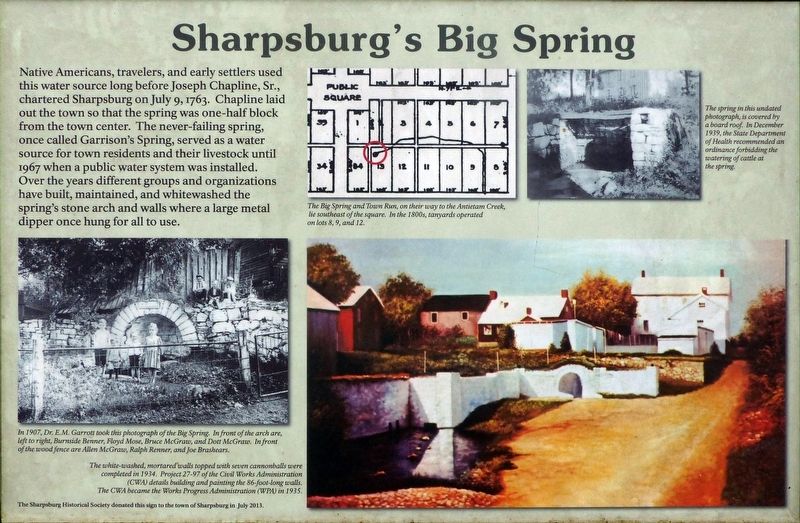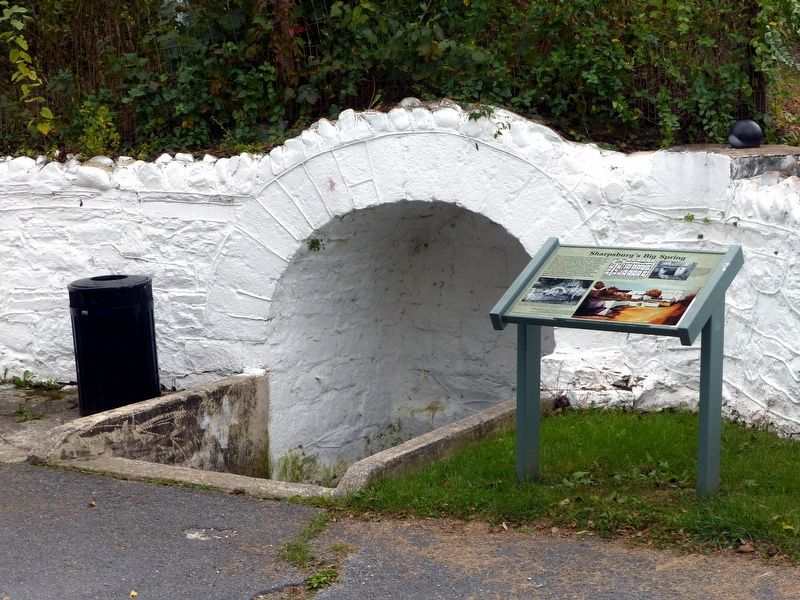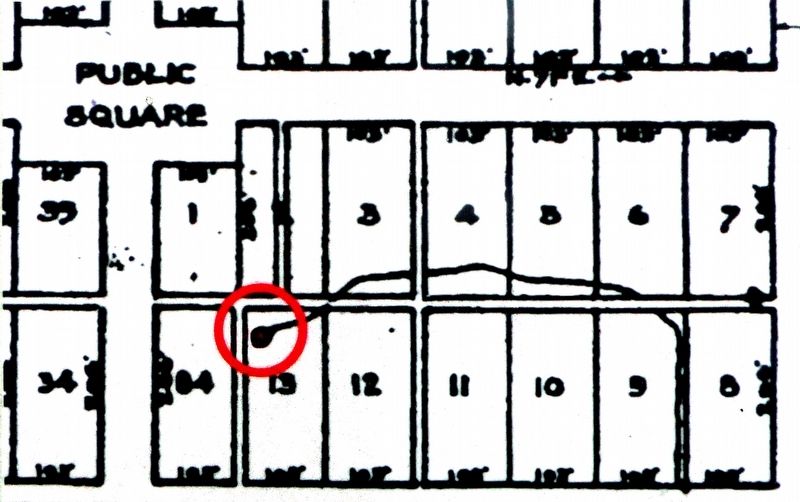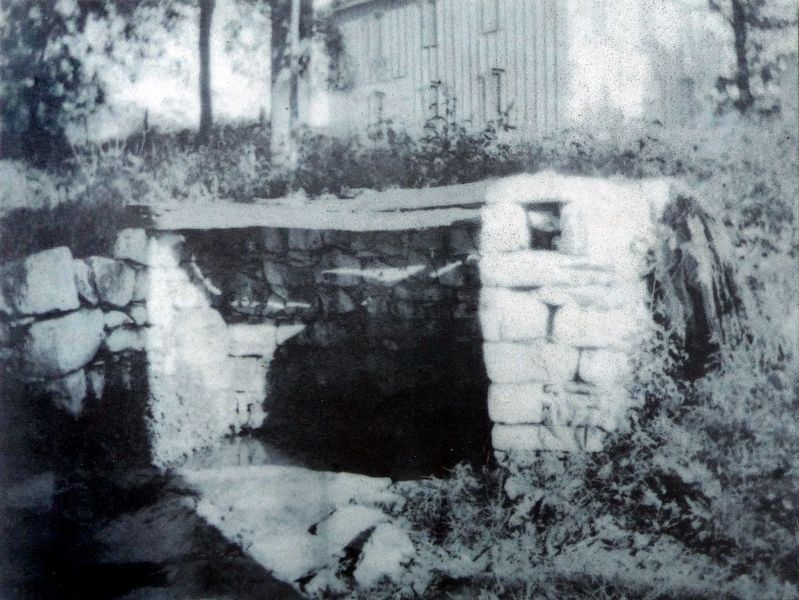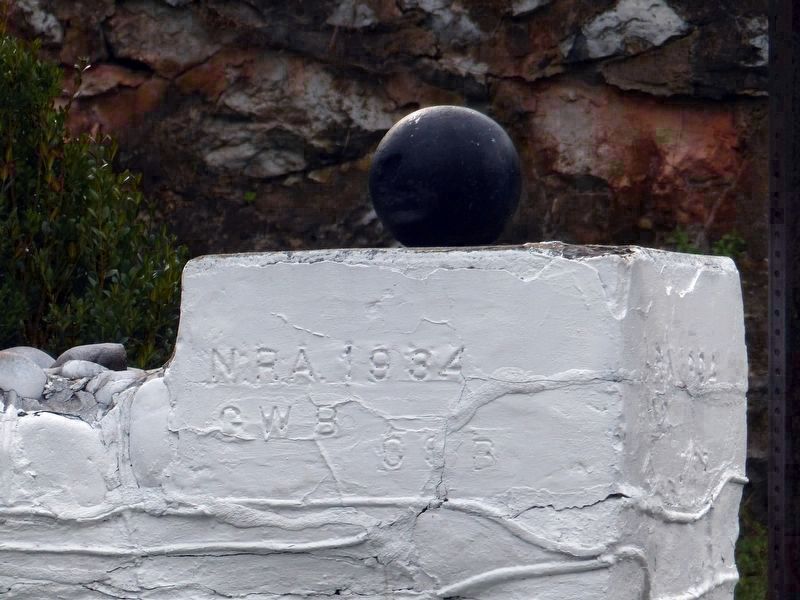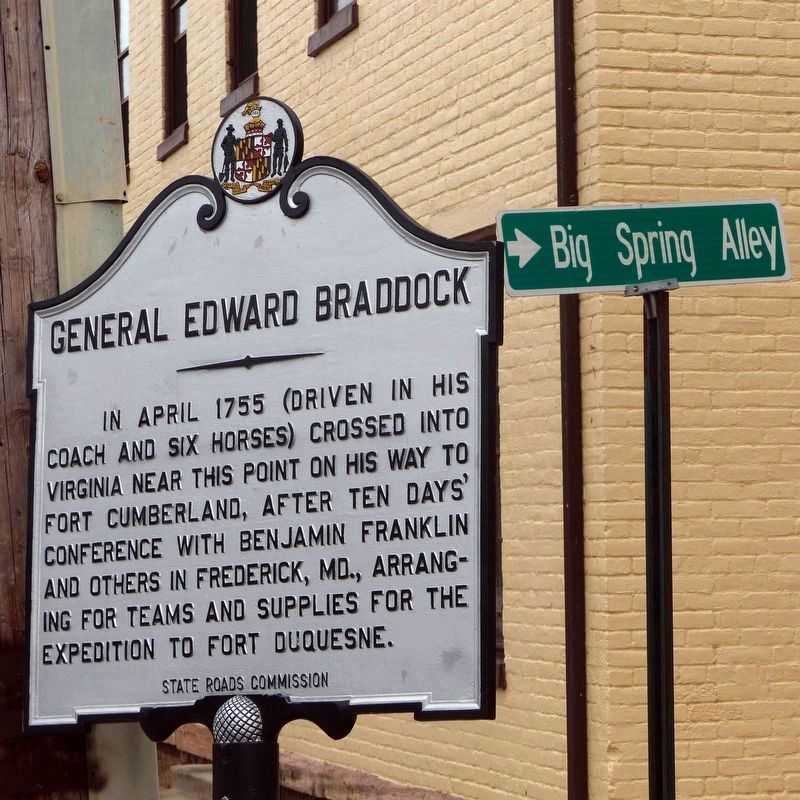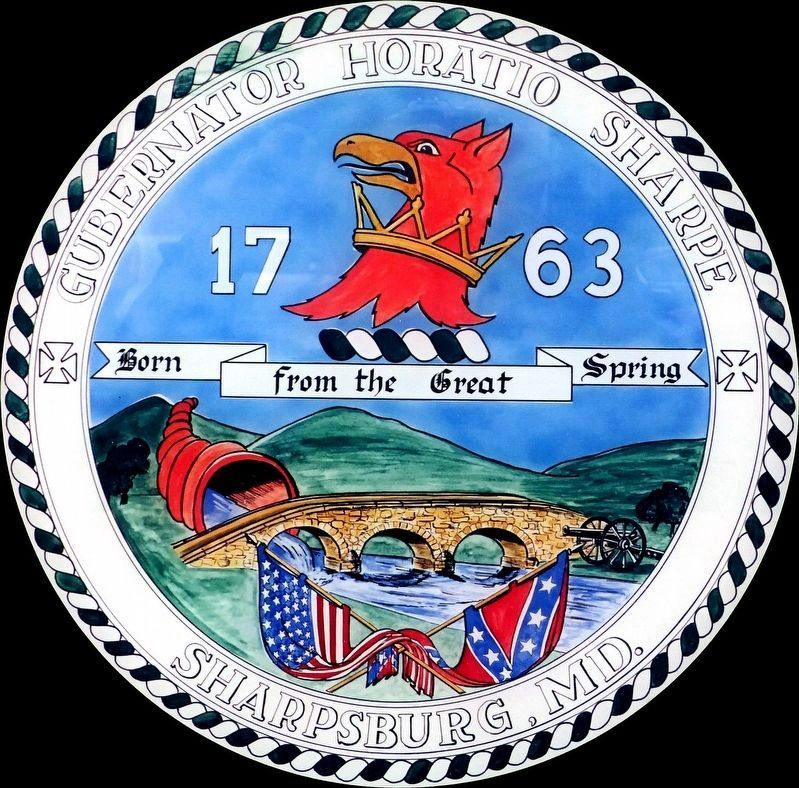Sharpsburg in Washington County, Maryland — The American Northeast (Mid-Atlantic)
Sharpsburg's Big Spring
The Sharpsburg Historical Society donated this sign to the town of Sharpsburg in July 2013.
Erected 2013 by The Sharpsburg Historical Society.
Topics. This historical marker is listed in these topic lists: Colonial Era • Notable Places • Settlements & Settlers. A significant historical year for this entry is 1763.
Location. 39° 27.461′ N, 77° 44.871′ W. Marker is in Sharpsburg, Maryland, in Washington County. Marker can be reached from South Mechanic Street. This marker is at the intersection of Alley 15 (Big Spring Alley) and Alley 10 behind 103 East Antietam Street in Sharpsburg. Touch for map. Marker is in this post office area: Sharpsburg MD 21782, United States of America. Touch for directions.
Other nearby markers. At least 8 other markers are within walking distance of this marker. General Edward Braddock (within shouting distance of this marker); Sharpsburg Bluebirds (within shouting distance of this marker); In Recognition of the Patriotism Shown by All Who Answered Our Country's Call in the World War (within shouting distance of this marker); Viet Nam Era Memorial (about 300 feet away, measured in a direct line); Korean Conflict Memorial (about 300 feet away); The Historic Grove House (about 300 feet away); Kretzer Homestead (about 400 feet away); William Chapline House (about 400 feet away). Touch for a list and map of all markers in Sharpsburg.
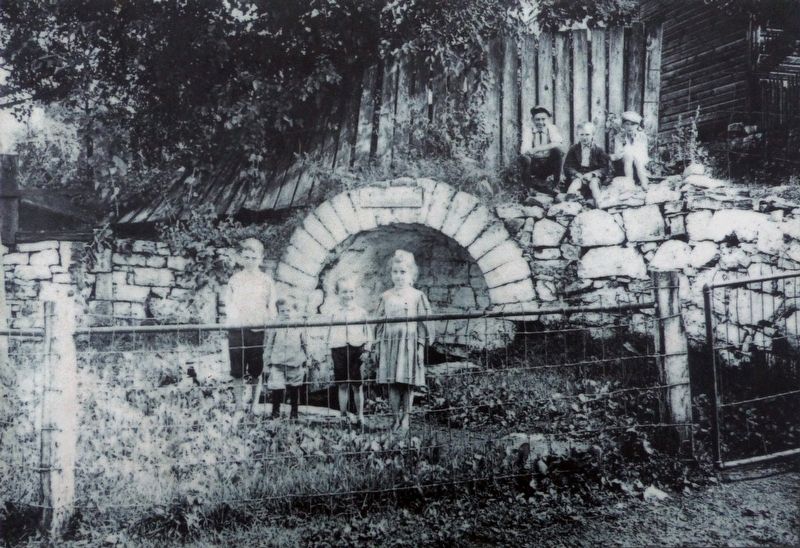
Photographed By Allen C. Browne, October 19, 2019
3. Sharpsburg's Big Spring
In 1907, Dr. E.M. Garrott took this photograph of the Big Spring. In front of the arch are, left to right, Burnside Benner, Floyd Mose, Bruce McGraw, and Dott McGraw. In front of the wood fence are Allen McGraw, Ralph Renner, and Joe Brashears.Close-up of photo on marker
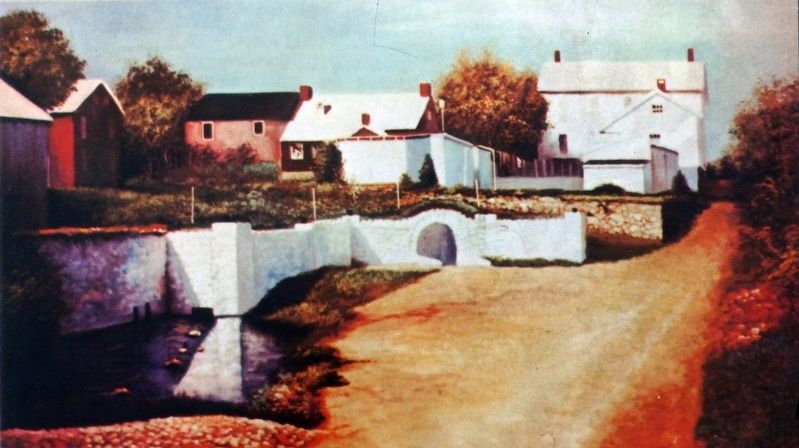
Photographed By Allen C. Browne, October 19, 2019
6. Sharpsburg's Big Spring
The white-washed, mortared walls topped with seven cannonballs were completed in 1934. Project 27-97 of the Civil Works Administration (CWA) details building and painting the 86-foot-long walls. The CWA became the Works Progress Administration (WPA) in 1935.Close-up of photo on marker
Credits. This page was last revised on October 25, 2019. It was originally submitted on October 21, 2019, by Allen C. Browne of Silver Spring, Maryland. This page has been viewed 948 times since then and 88 times this year. Photos: 1, 2, 3, 4, 5, 6, 7, 8, 9. submitted on October 21, 2019, by Allen C. Browne of Silver Spring, Maryland. • Bill Pfingsten was the editor who published this page.
